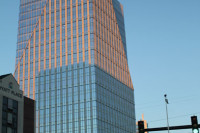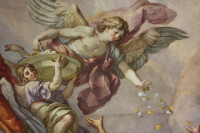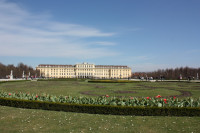Travel
Understanding the world of cathedrals: St Stephen’s Cathedral/Stephansdom (Austria)
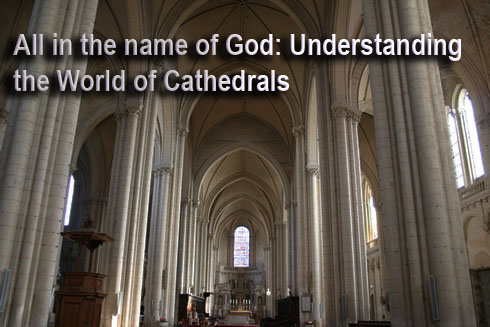
A Viennese and Austrian major landmark
If you have the chance to visit the Austrian capital, you will without any doubt, make it to Stephen’s cathedral, located in the center of town, on Stephen’s Platz.
The Stephansdom called Steffl is the landmark recognized by most Austrians.
In the middle of the 15th century, it was considered the most important cathedral in the southeast of Middle Europe.
Built on an old Roman cemetery, the limestone building faces the Southeast.
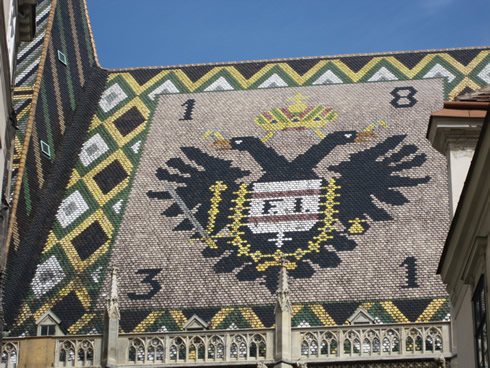
Multicolored tile roof – Stephen’s cathedral
What strikes pedestrians while walking toward Stephen’s cathedral is the beautiful 230,000 multicolored tile-roof.
The cathedral suffered numerous damage since its construction due for instance to Turkish invasions in 1529 and 1683, Napoleonic wars, fires and bombings.
In 1990 when the well known Austrian architect Hans Hollein constructed the Haas House, facing the Steffl, it brought a controversy. How could one build something so different and made of glass in front of this old landmark?
Since then, you can watch the reflection of the cathedral in the glass roof of the Haas House.
Built in memory of St Stephen in 1147, just before the second Crusade, it did not become a cathedral before 1469. The archbishop sits there only since the beginning of the 18th century (1723).
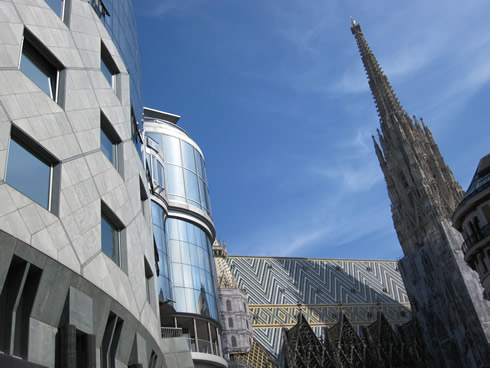
Haas House facing Stephen’s Cathedral
While entering St. Stephen’s your eyes are drawn to the high gothic hall choir.
If you pay to visit the right part of the cathedral, you will be able to see the late Gothic pulpit. It has a self-portrait sculpture, probably of the architect, Anthon Pilgram. It is quite impressive as it is a man looking out a window, called the Fenstergucker.
There is a statue of Duke Rudolf IV, known as the founder, at the entrance. He is responsible for having started the South tower and the staggered hall.
Important dates and characteristics about the construction:
- Over 350 feet (107 m) long and 111 feet (34 m) wide
- South Tower 450 feet (136 m) – built from 1368 to 1433.
- North Tower 223 feet (68 m) – was supposed to be identical to the South tower but it was never finished. It started in 1450 with Kaiser Friedrich III.
- Right & Left Towers of the Heathens (Heidentürme)
- Giant Gate (Riesentor) from the 13th and named probably for a mammoth bone found there.
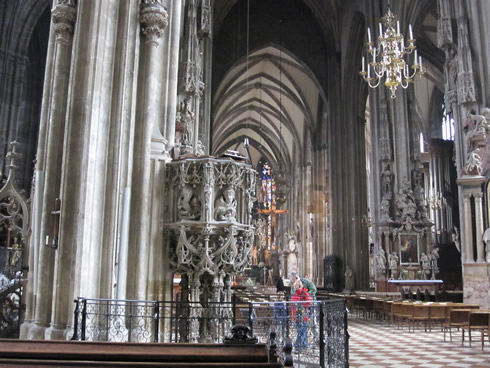
Inside of St. Stephen’s with Gothic pulpit on the left
- 23 bells: The most important one is the Pummerin in the North Tower weighs over 44 pounds (20 kg) – is the biggest bell in Austria and third in Europe. It was built in 1711 with leftover metals from Turkish canons.
- Building of three nave choir started in 1304.
- Most of the work was done by 1160 but it lasted until 1511.
- Impressive nave with staggered hall.
- Important builders: Hans Puchsbaum and Anton Pilgram
Restorating St Stephen’s cathedral:
In the 19th century the Gothic widows were redone.
In 1945 during the Second World War after fire and bombing most of the St Stephen’s roof, North tower, Gothic windows and choirs were destroyed. It was thanks to the people’s generosity that it could be financed and restored. It reopened for the first time for mass three years later.
Later with the beginning of a cathedral stamp series and lottery and help of foreign countries, more work and restoration was done.
In 1976 started the restoration of the North Tower, which lasted 22 years.
Since 1987, exists an institution, a Verein Unser Stephansdom, created by the mayor Helmut Zilk,which does important fund raising. Among other things, financing come from the church tax and people’s donations.
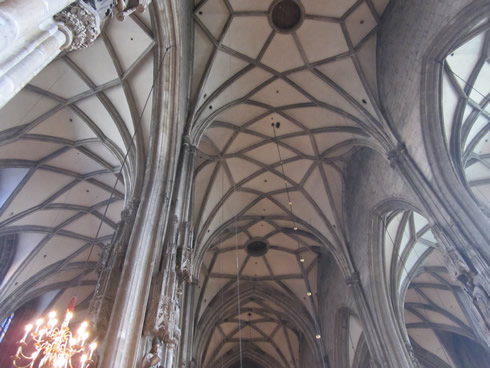
Inside of St. Stephen Cathedral and the three naves
Stephansdom needs constant renovation due to the cold, humidity and rain. It costs about 2.2 Million euros per year. 1.3 million alone in 20 years was spent to restore the Wiener Neustädler altar.
In the last decade, work was done on the frescoes, choir, chapels and since 2009 on the Western facade and the South tower.
Now the cathedral construction department takes care of the renovations using the newest techniques to work on stones, like laser. There is always a need to pay attention to the roof and to the stones to make sure they are stable.
A new project is to work on a heating system so that people don’t freeze at church during the winter months.
If you have time or feel up to it, hike up the stairs all away to the top to see Vienna’s skyline. Take a tour to hear more about the history of the building and legends of the builders. Visit during different moments of the day to notice the various details on the stain glasses.
If you are here to follow Amadeus Mozart’s footsteps, this will bring you right to St. Stephen where the composer got married.
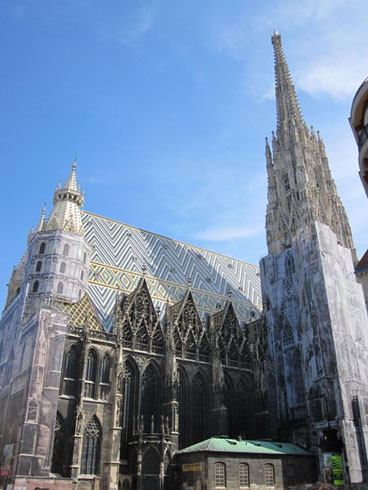
Outside view of St. Stephen’s cathedral in Vienna

